Recording ATR (Attenuated Total Reflection) spectra is a standard technique in infrared spectroscopy. In order to simulate ATR experiments (which regularly raise questions to be answered by spectroscopic ray-tracing) a very special volume object called 'ATR crystal' has been implemented in SPRAY. The dialog to set the object's parameters is this:
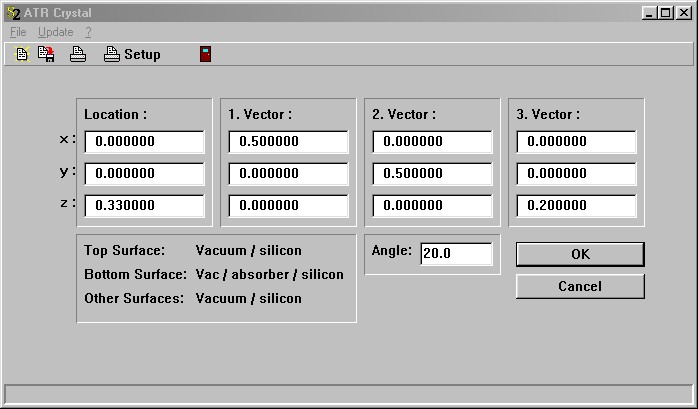
The parameter have the following meaning. Location, Vector 1 and Vector 2 define a base rectangle as described before. Along Vector 3 (which should be perpendicular to Vector 1 and Vector 2) the rectangle is moved a distance given by the length of Vector 3. During this 'motion' the length of the rectangle (size in direction of Vector 1) is decreased (see below). Finally, the base rectangle is moved in the negative Vector 3 direction increasing its size. This way the shape of the ATR crystal is obtained:
The following sequence of side views (plane of Vector 1 and Vector 3) shows how the decrease/increase of the rectangle is controlled by the parameter Angle which sets the angle of the lower left corner of the ATR crystal. The test rays are send to a silicon prism (refractive index 3.4):
45° :
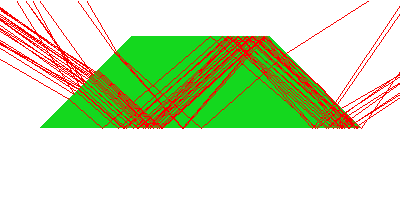
20°
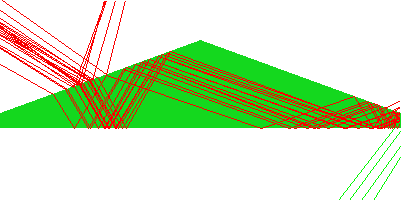
80°
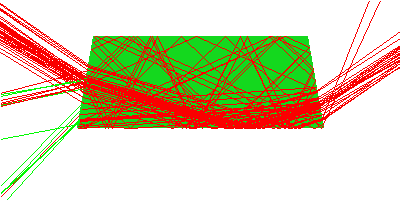
You can assign different interfaces to the top, bottom and side surfaces of the ATR crystal. Only user-defined interfaces (dragged&dropped from the list of interfaces) are allowed.